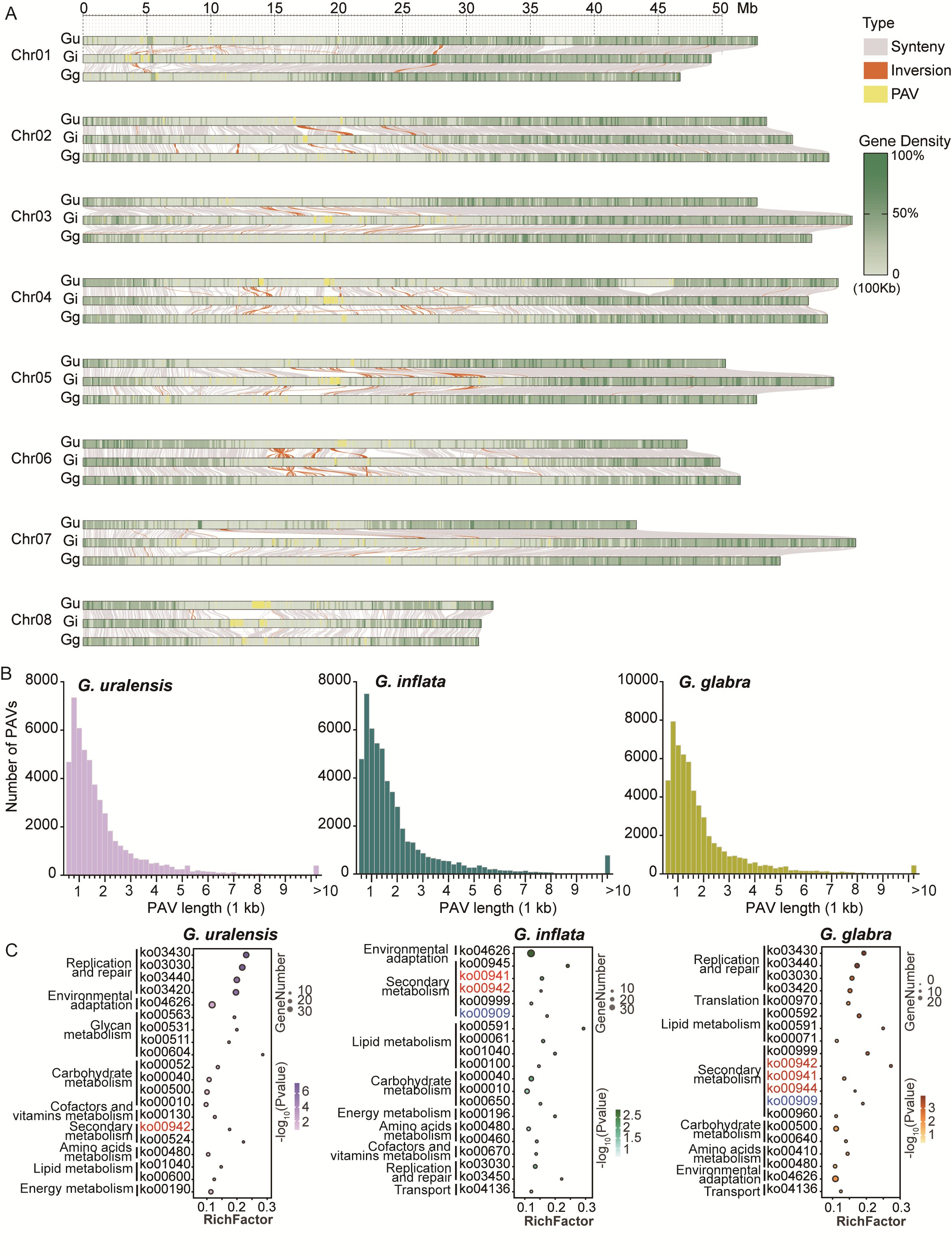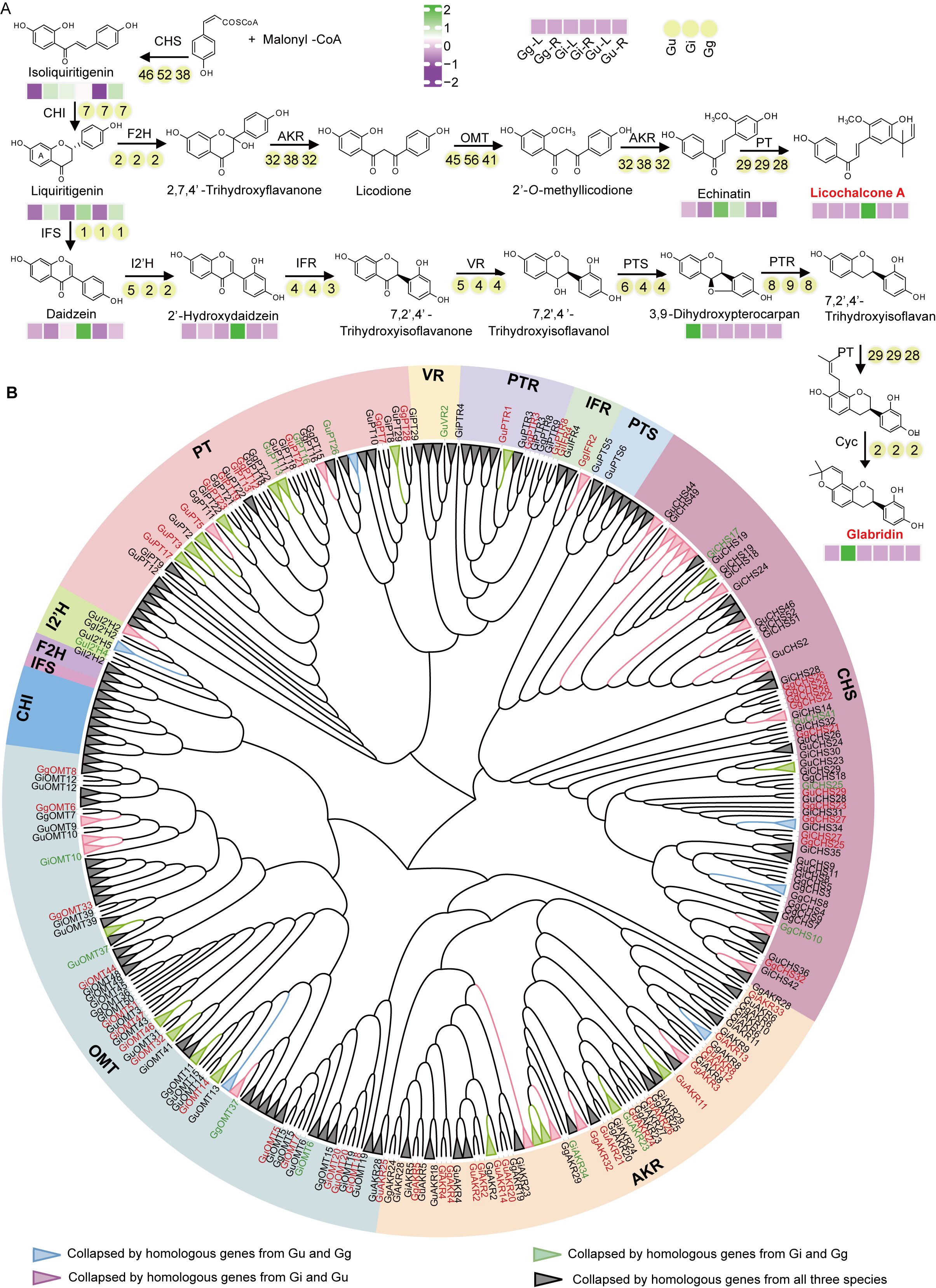
Recently, the team led by Wang Ying from the South China Botanical Garden of the Chinese Academy of Sciences and the team led by Xia Zhiqiang from Hainan University published a research paper titled "Comparative genomics of three medicinal Glycyrrhiza species unveiled novel candidates for the production of important bioactive compounds" in The Plant Journal. The research team constructed high-quality reference genomes for three medicinal licorice species, G. uralensis, G. inflata, and G. glabra, with genome sizes of 425 Mb, 447 Mb, and 423 Mb, respectively. Through whole-genome alignment analysis, collinear relationships and structural variations were found among the three, in which presence/absence variation (PAV) genes were mainly enriched in secondary metabolic pathways, providing gene resources for analyzing the synthesis and regulation of common and differential active ingredients in the three licorice species.
Based on the obtained structural variations, combined with transcriptome analysis of different tissues and developmental stages, a regulatory network of glycyrrhizin was constructed, and GibHLH9, GibHLH53, and GibHLH174 were verified as key transcription factors promoting the synthesis of glycyrrhizin. At the same time, the genes in the biosynthetic pathways of licochalcone A (LCA) and glabridin were analyzed, and the catalytic function of GiOMT17 in the biosynthesis of LCA was verified. The formation of species-specific genes and differences in gene expression explained the differential accumulation of characteristic flavonoids in the three medicinal licorice species.

Figure 1 Genomic synteny and structural variations among three medicinal Glycyrrhiza species.

Figure 2 Characterization of key genes for biosynthesis of licochalcone A (LCA) and glabridin in three Glycyrrhiza species.
Li Yuping, an assistant researcher at the South China Botanical Garden of the Chinese Academy of Sciences, Xia Chengcai, a doctoral student at Hainan University, and Luo Ming, a researcher at the South China Botanical Garden of the Chinese Academy of Sciences, are the co-first authors of this paper. Professor Xia Zhiqiang from Hainan University, researchers Li Yongqing and Wang Ying, from the South China Botanical Garden of the Chinese Academy of Sciences, are the co-corresponding authors. This research was supported by the Natural Science Foundation of Guangdong Province (2025A1515110122).
Paper link: https://onlinelibrary.wiley.com/doi/10.1111/tpj.70223



